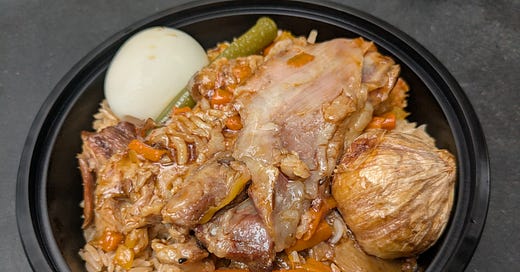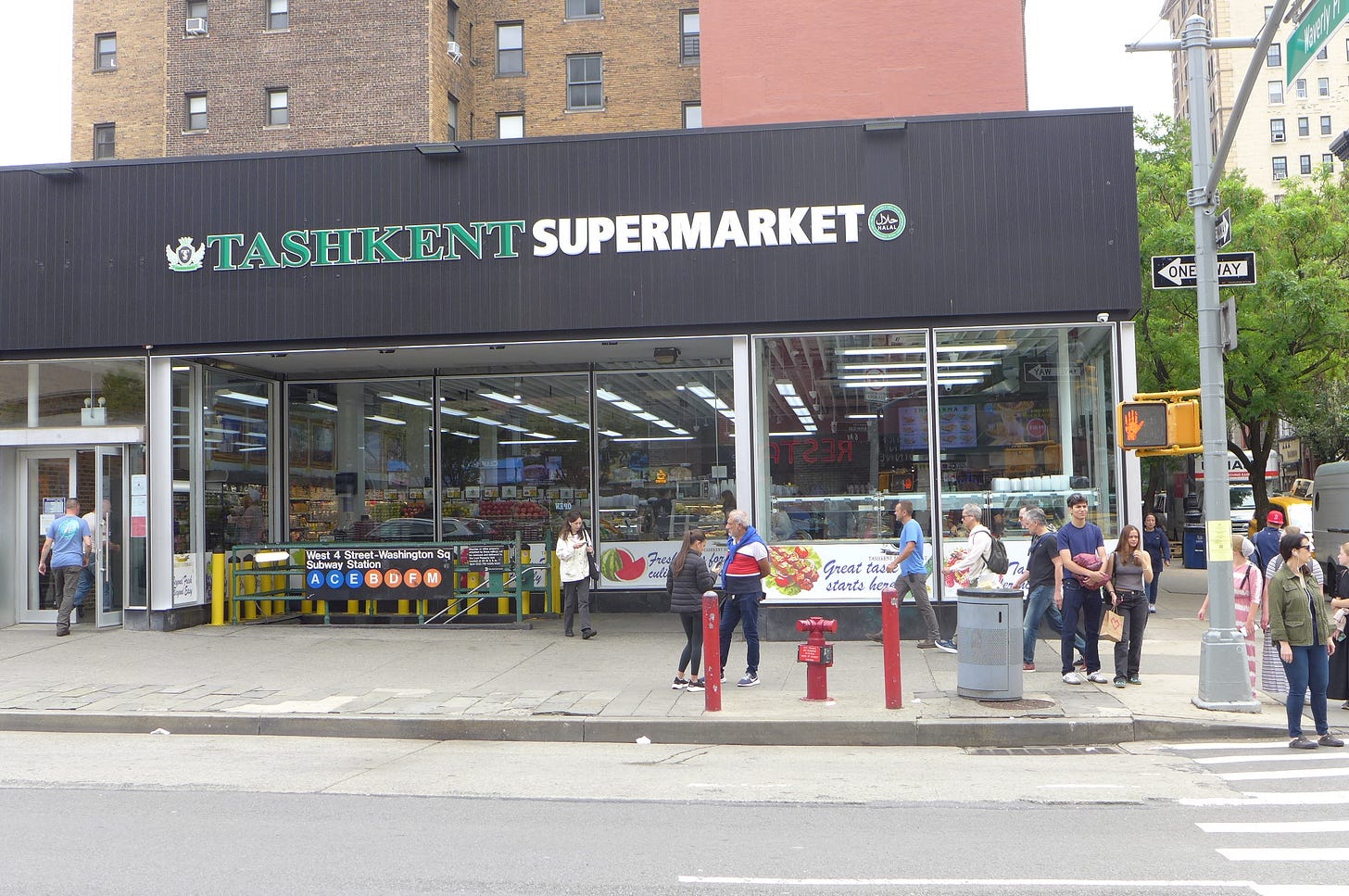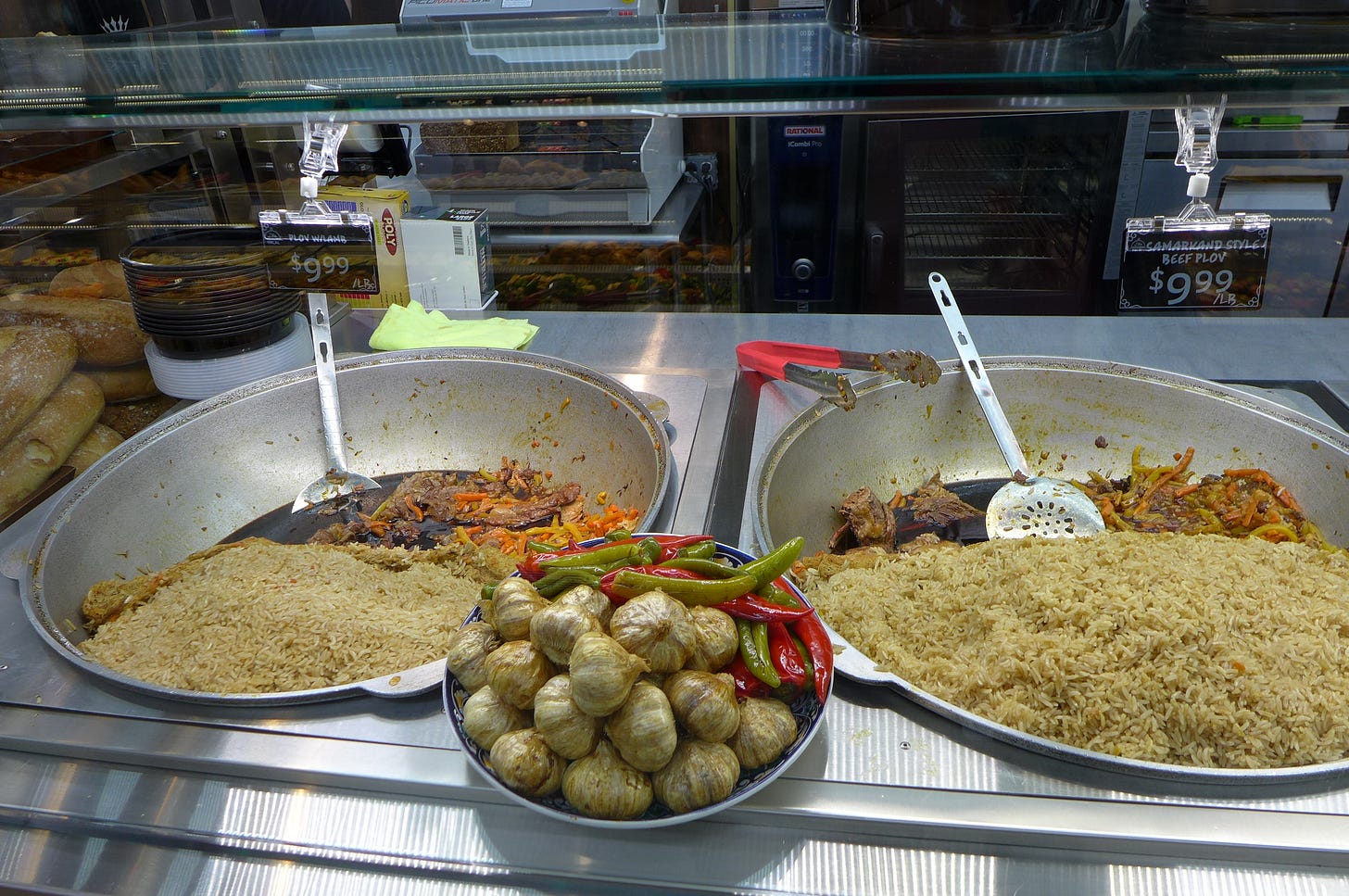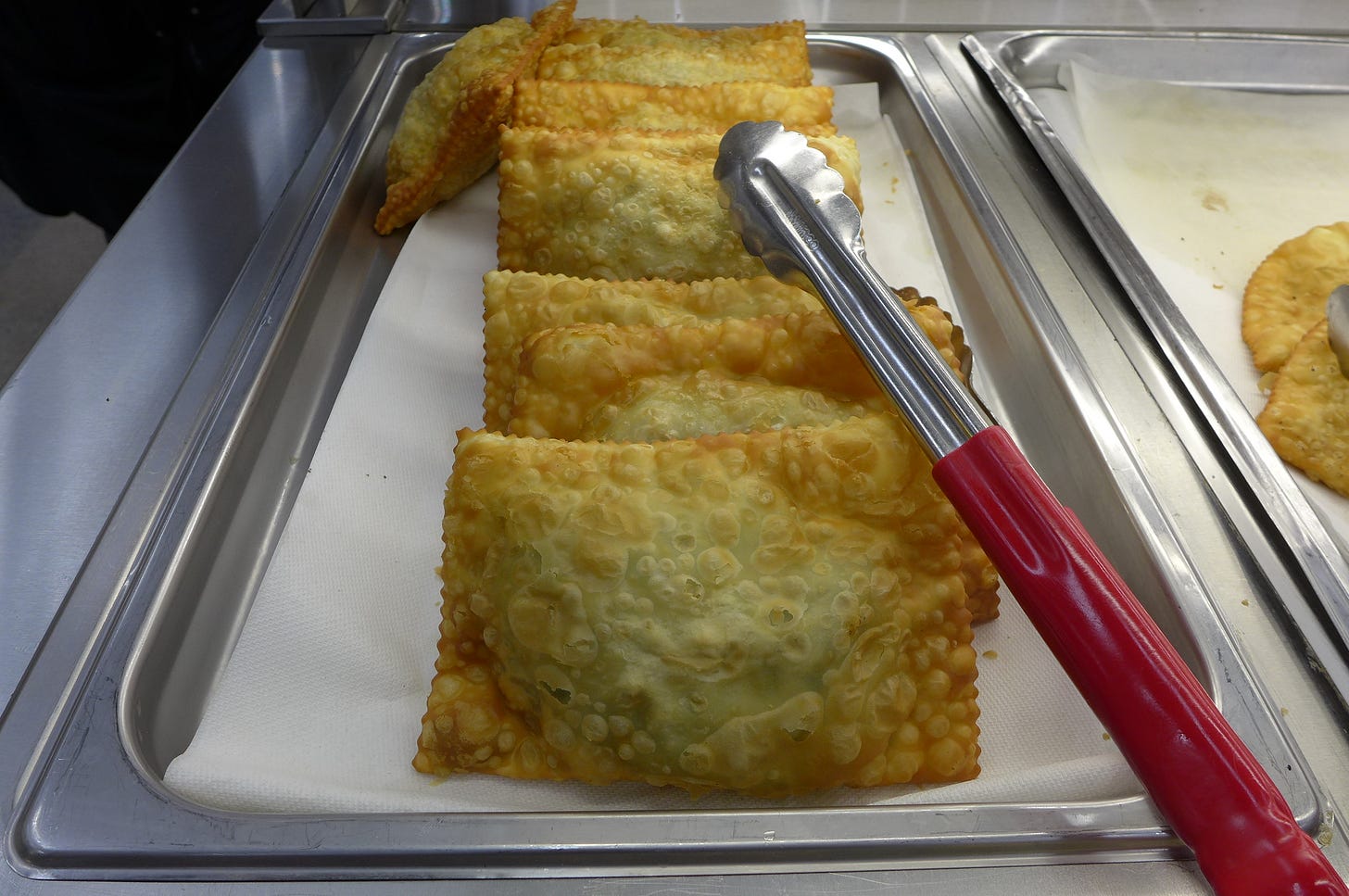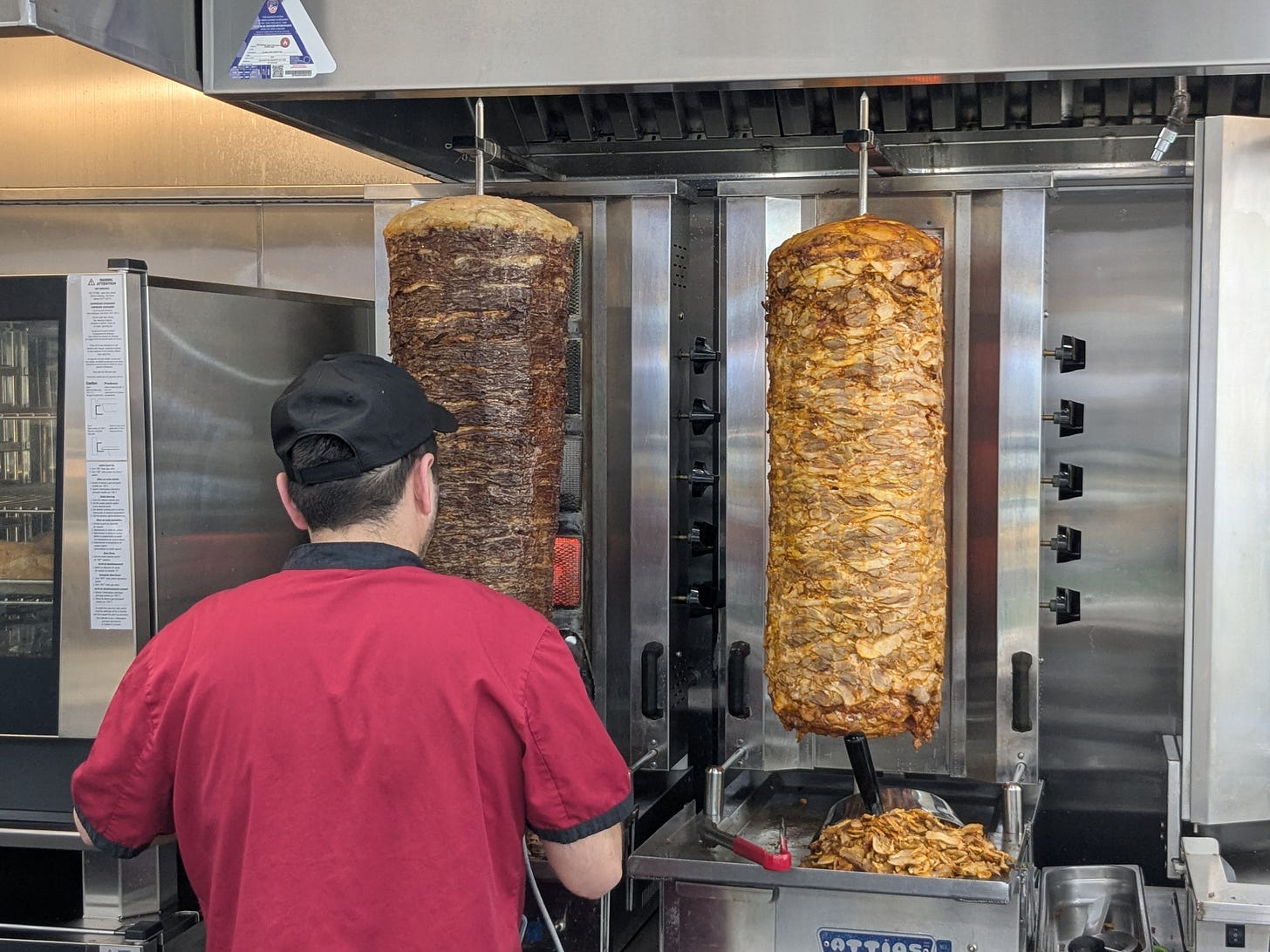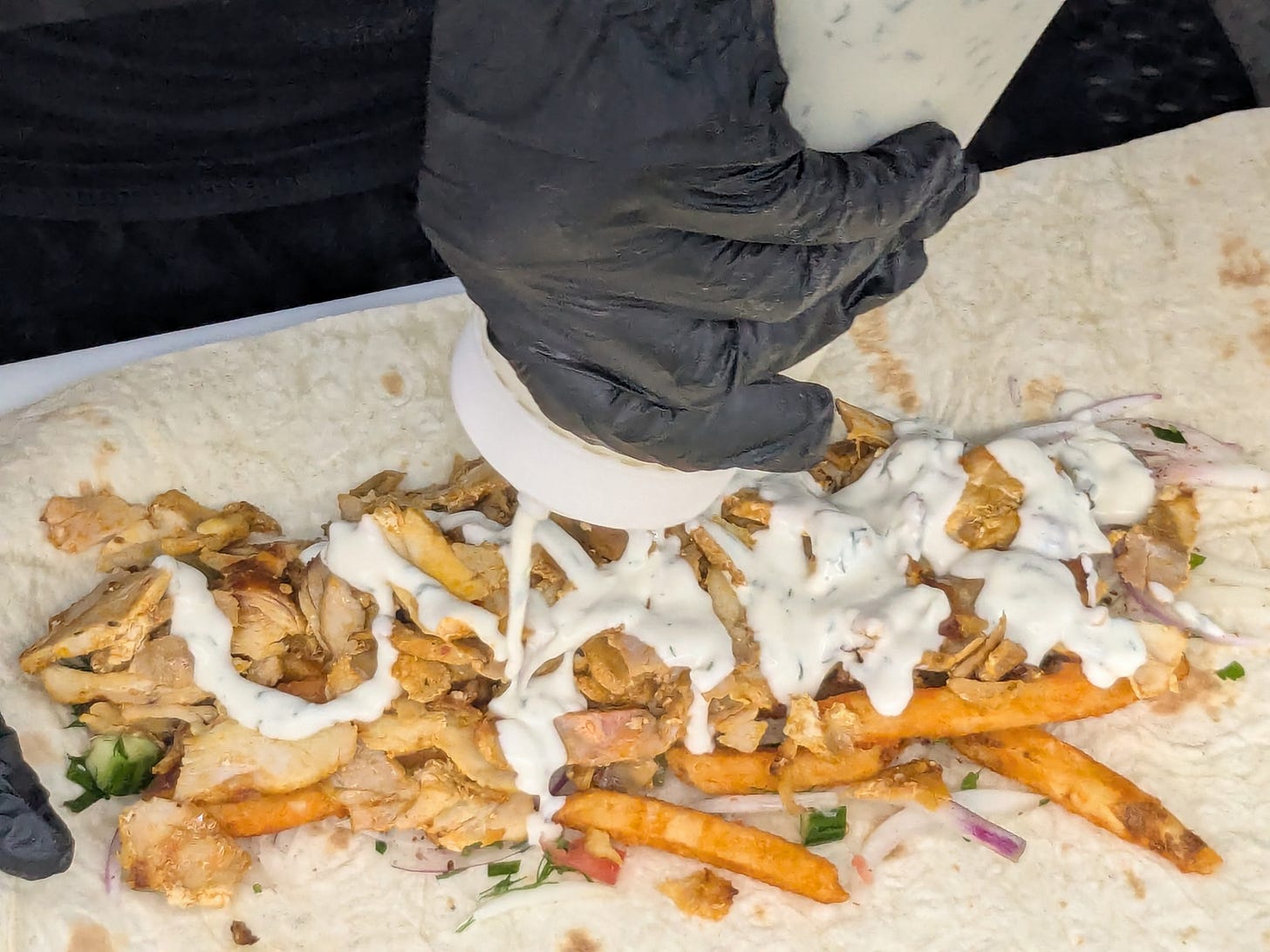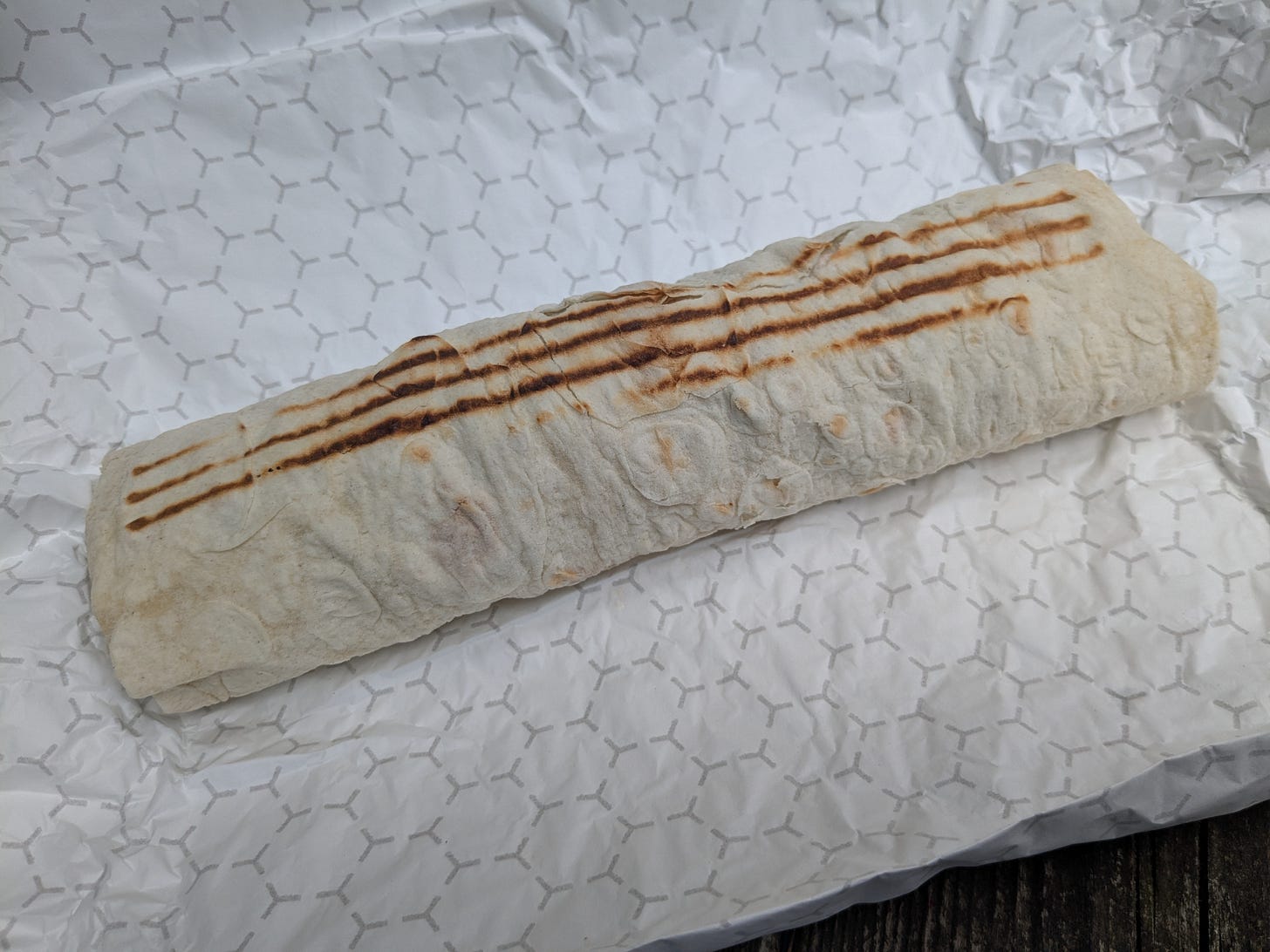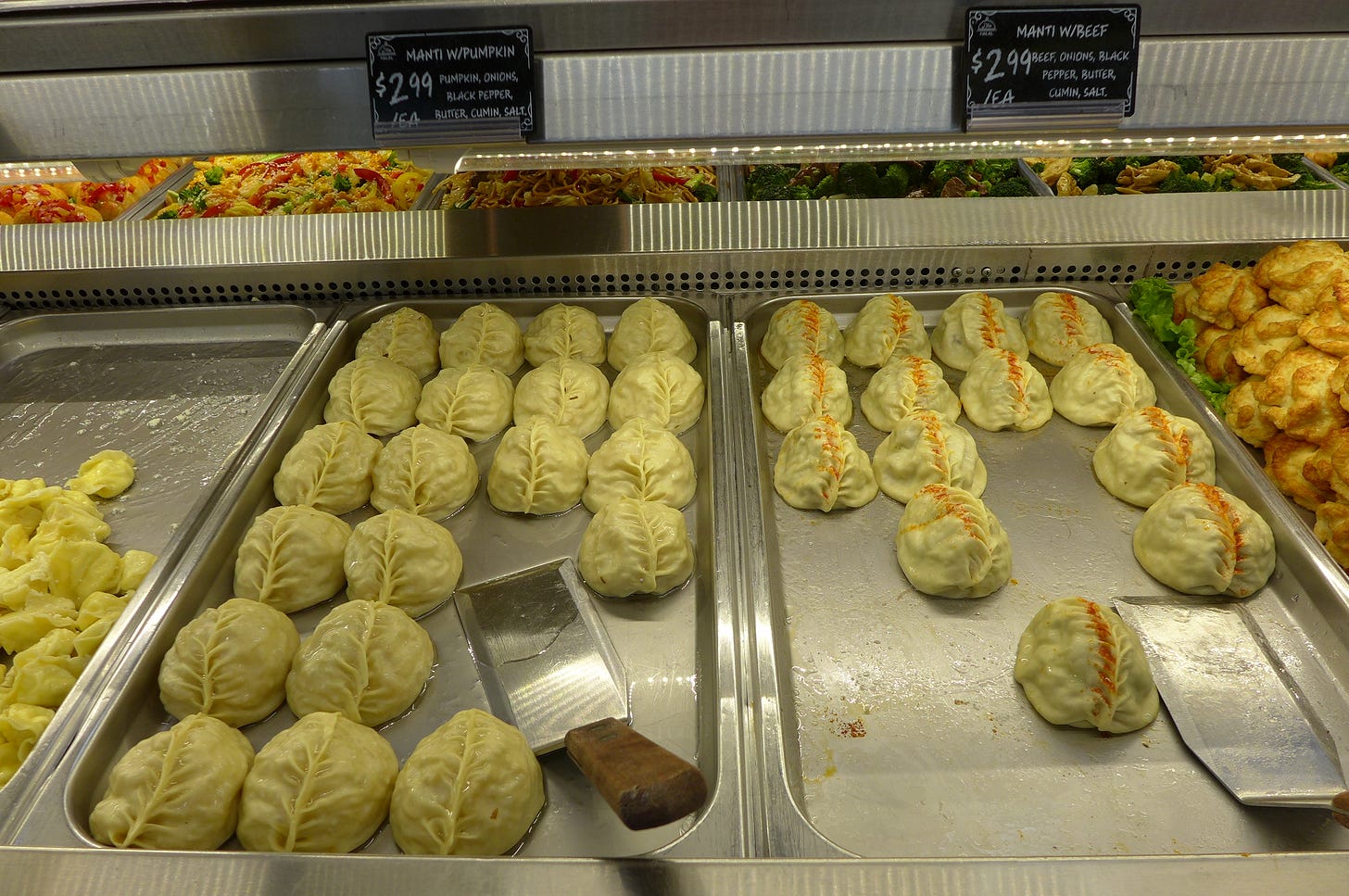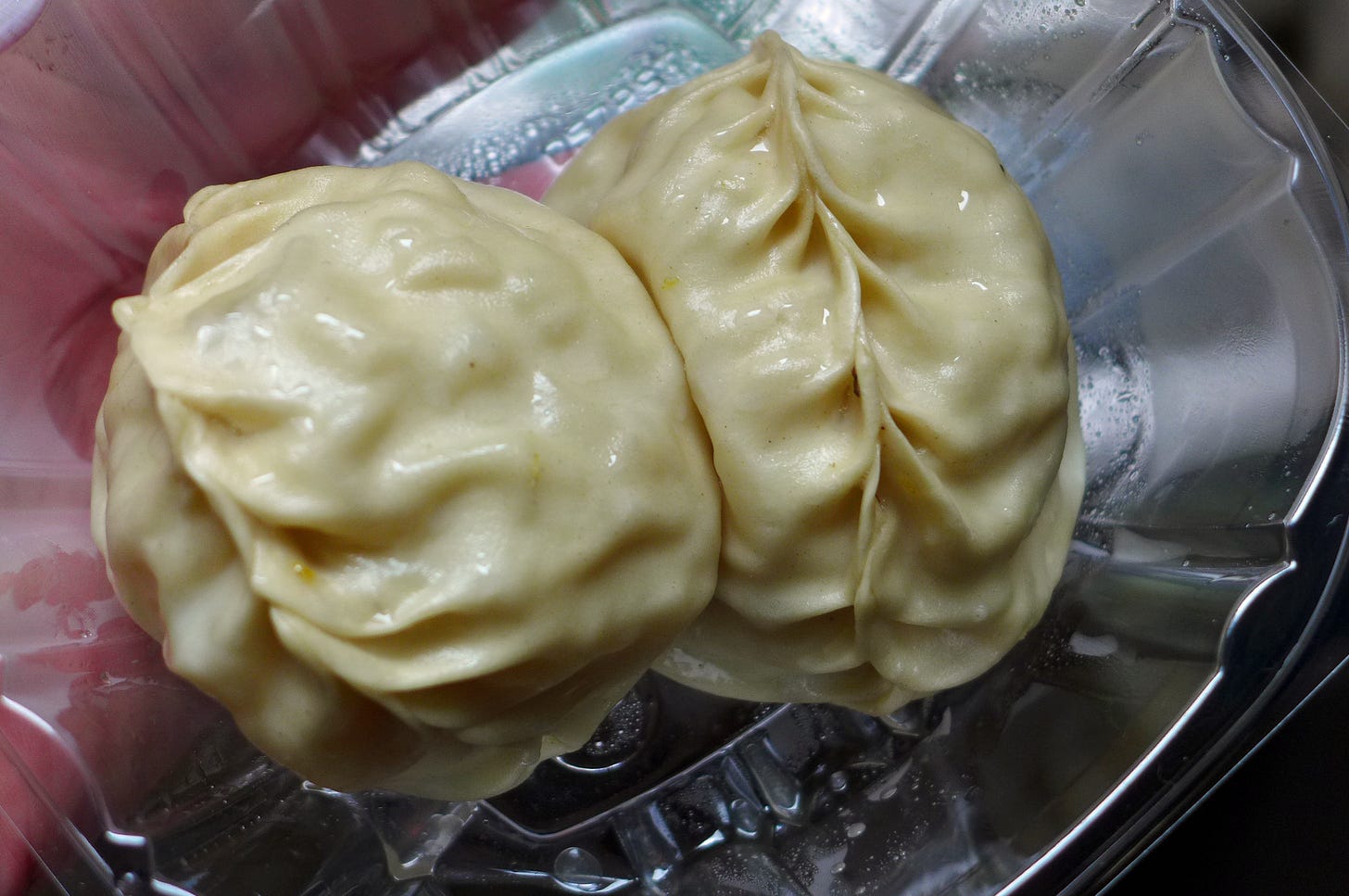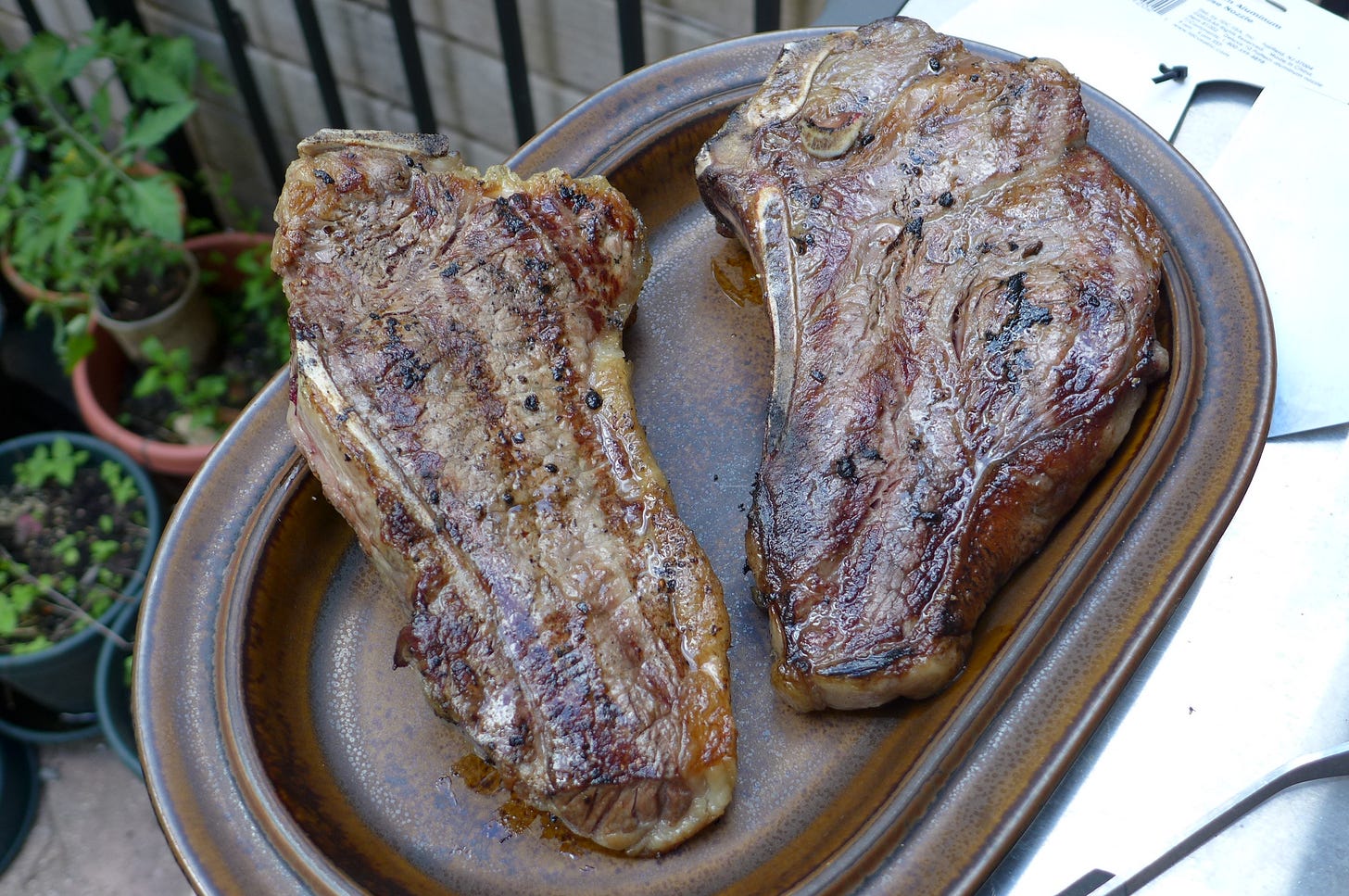The Best Bites at the New Tashkent Supermarket
Plov, massive pumpkin dumplings, and more
When Tashkent Supermarket — named after one of Uzbekistan’s great Silk Road cities — opened in 2013 at the corner of Brighton Beach and Coney Island avenues under the screeching Q and B tracks, it quickly became the darling of beachgoers. They would drop in to get a garlicky chicken tabaka, a couple of potato piroshkis, and a quart of cold beet borscht, then make a picnic of it.
Gradually, they began to explore its other food offerings, which included not only Central Asian fare like kebabs, dumplings, and flaky pastries, but also Middle Eastern shawarma, mayo-drenched Russian salads, and smoked fish. In fact, a majority of the floor space came to be devoted to a humongous hot-and-cold buffet filled with food unfamiliar to many New Yorkers.
Then signage went up for a branch right over the West Fourth Street subway station at 378 Sixth Avenue, in a former big-box drug store. Villagers craned their necks and scratched their heads in wonder — though the space remained empty for three full years. A few weeks ago it finally opened, and I’ve been dropping in nearly every day as a hot and cold buffet that grew to 150 dishes gradually added stews and savory pastries to its repertoire, many in a Central Asian and Russian vein.
Here are four things I’d most recommend — plus a bonus to cook at home.
Lamb plov
The signature dish of Uzbekistan is plov, descended from Middle Eastern pilaf after a trek over the Silk Road. It features rice, lots of orange and yellow carrots, a few raisins and chickpeas, and big ragged hunks of lamb that have been braised in a sealed pot, a process that lets none of the flavors escape. The result is rice so good you’ll scoop it up before you go for the meat ($9.99 per pound, $15 for a big serving). Entire heads of garlic, boiled eggs, and long green chiles are available as garnish — but you don’t really need them.
Spinach cheburek
These pockets stuffed with spinach tasting of green onion, dill, and mint — an elusively irresistible combination — make a wonderful snack. They are periodically rushed to the display piping hot as they come from the fryer, so you should get a warm one ($3.49), and then gobble it out on the sidewalk. Beef and potato-and-mushroom also available, and both worth trying.
Chicken shawarma
Twin cylinders whirl seductively layered with a chicken and a lamb-beef mixture – definitely pick the chicken ($10.99), because the other one tastes like a geneticist’s breeding mistake. The poultry is generously loaded into a paper-thin flatbread, along with a dilled garlic sauce, and a modest scatter of cukes and onions for internal crunch. At your request, the assembler will toss in a handful of French fries, free of charge. As a last step, the thing undergoes a warm embrace in a sandwich press.
Pumpkin manti
A profusion of steamed dumplings are available at Tashkent Supermarket, including varenicki, pelmeni, and manti ($2.99 each) — the last most associated with Uzbekistan. Looking like footballs, they are cunningly designed to hold the maximum filling. The pumpkin are my favorite, with a sweetness provided by onions and orange squash. Think about buying a dozen or two for your Sunday afternoon football party.
Bonus: Strip steak
One of the most astonishing things about Manhattan’s new Central Asian supermarket is the meat case. The steak selection corresponds with what might be found in a high-priced butcher, with strips, ribeyes, and even tomahawks leading the way. But instead of being around $30 per pound, they are $11 to $15 per pound for meat crazed with streaks of fat that looks exactly like prime aged beef from a butcher shop. The meat is halal and described as “prime angus,” though no one at the counter could tell me its provenance. So I decided to make a test, getting a “NY strip” from Pino’s Prime Meats (149 Sullivan Street, $28 per pound) and a similar size strip steak from Tashkent ($12.99 per pound). I grilled them to rare in a friend’s backyard, then sliced and compared them.
Both looked similar, though Tashkent’s glowed a little more red. That steak was nicely marbled, but a little more rubbery than Pino’s, which had the slightly crumbly texture and funkier finish we associate with dry-aged prime steak. If I were rich, I’d definitely stick with Pino’s, but the Tashkent steak was such a bargain, it may be preferable for everyday eating.


